Scotland is a land of rugged landscapes, ancient castles and vibrant cities. Here are the top places to visit in your ultimate guide to travelling Scotland.
The ultimate guide to Rome, Italy
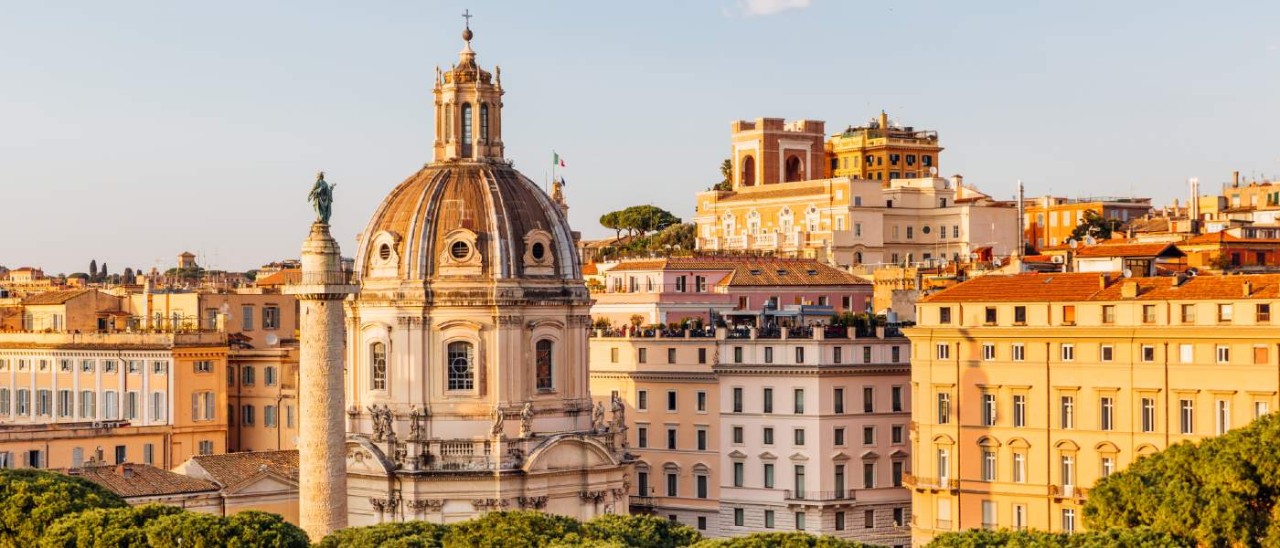
Rome, the Eternal City, has captivated travellers for centuries with its timeless blend of ancient ruins, vibrant street life and sumptuous Italian food.
As the capital of Italy and a UNESCO World Heritage Site, Rome offers visitors an unforgettable journey through history, culture and cuisine. Whether you're wandering cobblestone streets, marvelling at ancient monuments or sipping espresso at a sunny piazza, Rome is a destination that rewards every type of traveller.
Here's what you need to know to have an extraordinary holiday in Rome, including practical tips on how to get around and how to stay safe. Before you go, consider travel insurance for Europe, and learn how to protect your passport and smartphone when travelling.
RACV Travel & Experiences is your one-stop shop for travel, with RACV Members saving on tours, cruises holiday packages, travel insurance and more.
Jump to
Top attractions in Rome
Rome is a busy city, so book tickets in advance for popular sites like the Vatican Museums, Colosseum and Borghese Gallery to avoid long queues.
Ancient ruins and monuments in Rome
Rome’s ancient ruins are the heart of the city and a testament to its former empire.
The Colosseum (Colosseo)
The Colosseum (also called the Flavian Amphitheatre) is Rome's most famous landmark and the world's largest amphitheatre. Completed in 80 AD, it hosted public spectacles like gladiatorial games and animal hunts. Today, visitors can still explore the famous arena and imagine the roar of the crowds.
Roman Forum (Forum Romanum)
The Forum was the political, commercial and social hub of ancient Rome. Walking among the ruins of temples, basilicas and arches provides an incredible glimpse into daily life in the Roman Empire.
For wonderful views over the Forum, head to Capitoline Hill - it has atmospheric lighting at night. Venture to the Tarpeian Rock on Capitoline Hill's southern side to see where traitors and criminals were once tossed to their deaths under the Roman Kingdom.
Palatine Hill (Palatino)
Overlooking the Forum, Palatine Hill is one of the ancient Seven Hills of Rome. According to legend, it was the site where Romulus founded the city. It was later home to several famous Romans, like Augustus and Cicero. The ruins of imperial monuments and the views across the city make it a highlight.
The Pantheon
The Pantheon is an architectural masterpiece and one of the best-preserved ancient buildings in the world. Its enormous dome with a central oculus that lets in light still inspires awe. It now serves as a Catholic church and is the final resting place of Italian kings and the famous painter Raphael.
Baths of Caracalla (Terme di Caracalla)
Once a massive bathing complex for all Romans to enjoy, the Baths of Caracalla showcase the grandeur of Roman engineering. The baths weren't just for hygiene, but also for socialising. This would have been one of the largest buildings in ancient Rome, full of hot, warm and cold baths, massage rooms, pools, dressing rooms, receptions and even other spaces like libraries - all adorned with mosaics and frescos.
Domus Aurea
You can visit parts of Emperor Nero's imperial residence in Rome, which was remembered for its great splendour and luxury. Nero was unpopular with his contemporary writers, who described him as tyrannical and debauched. His palatial Domus Aurea is certainly sumptuous: full of stucco, coloured marble, gold cladding, precious stones and large rooms for banquets and receptions. Add in sulphur baths, vineyards, gardens and an artificial lake and you have a true pleasure palace.
Circus Maximus
This ancient chariot racing stadium is probably history's largest performance venue. Holding over 250,000 spectators, it held horse and cart races, gladiator contests, triumphal processions and other social events. While not much remains, visiting the ruins is still awe-inspiring.
Hidden underneath the Circus Maximus is the Mithraeum: a sanctuary for a secret ancient cult called the Mithraic Mysteries. Little is known about these Mithras worshippers: their sanctuaries and rituals were only shown to initiates. You can tour this temple by appointment.
Old Appian Way (Via Appia Antica)
One of the oldest Roman roads, the Via Appia Antica is a cobbled road out of the city lined with tombs and ruins. Renting a bike is a great way to explore this historic route. Make sure to visit the three best catacombs: San Callisto, Saint Sabastian and Domitilla.
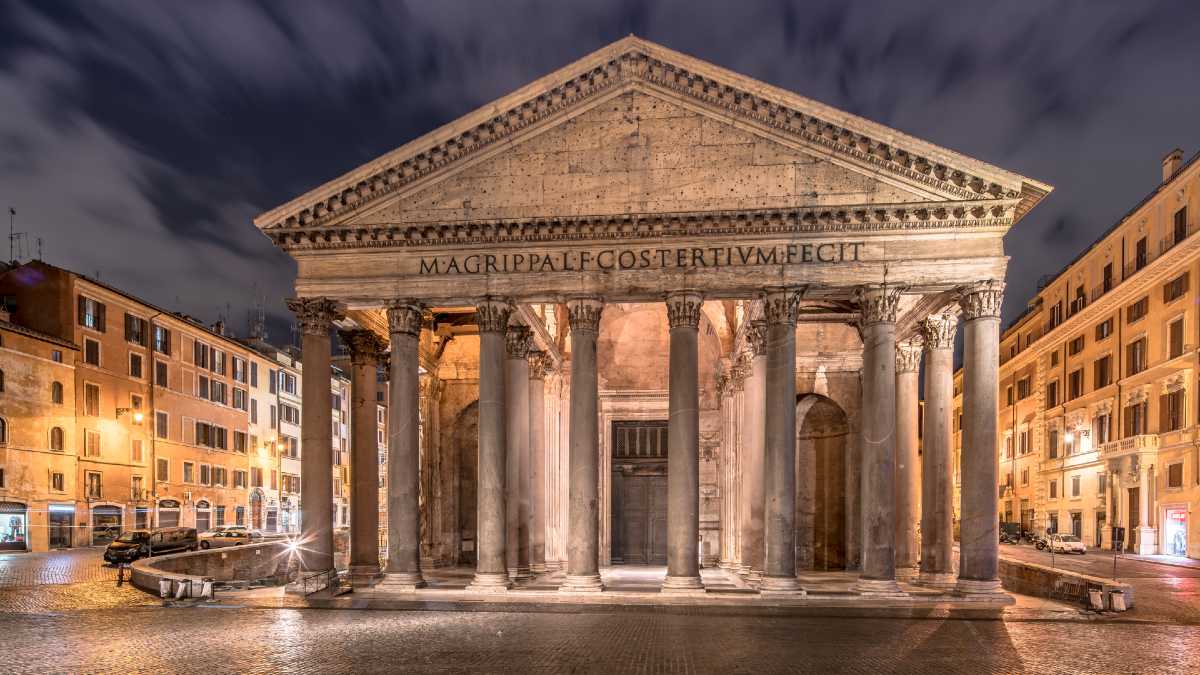
The Pantheon is an ancient architectural masterpiece. Image: Getty
Iconic churches and cathedrals in Rome
Rome is home to more than 900 churches, many of which are architectural and artistic treasures. When pilgrims visited Rome, they could earn an indulgence by visiting seven specific churches, including the four papal basilicas.
Basilica di San Giovanni in Laterano (St John Lateran)
The official cathedral of Rome, St John Lateran is technically the city's highest-ranking church. It was founded in 313 under Emperor Constantine the Great, whose Edict of Milan pronounced freedom of religion in the Roman Empire - paving the way for Christianity to rise to power.
The name Laterano comes from Plautius Lateranus, who was sentenced to death under Emperor Nero for allowing Christians to hide in his palace. St John Lateran is built in that palace's former gardens. The adjoining Lateran Palace was also a residence for popes in the early Middle Ages, before they moved their seat to the Vatican.
Basilica Papale di Santa Maria Maggiore
This fifth-century basilica is renowned for its mosaics and richly decorated chapels. It's one of Rome's four major papal basilicas, and the largest of Rome's 80 churches dedicated to Mary. It boasts ancient marble columns, a golden ceiling built with Columbus's American gold, and (allegedly) pieces of wood from Jesus's crib underneath the altar.
Interestingly, a blanket of snow appeared, on the hill where the church now sits, on 5 August 358 (the middle of summer). This alleged miracle is commemorated every year with white flower petals or foaming suds dropped from the ceiling.
Basilica di San Clemente
A unique layered church, San Clemente allows visitors to descend through centuries of history. This 12th-century basilica was built over a fourth-century church with some of the world's loveliest medieval frescoes. This was in turn built over a first-century Roman villa with a secret Mithraic temple in the basement.
You can book tickets down to these archeological excavations after visiting the church. It's just a short walk from the Colosseum and is on the way to St John Lateran, making it easy to visit.
Santa Maria della Concezione dei Cappuccini
Under this church is La Cripta dei Frati Cappuccini: a crypt full of the bones of about 3,600 Capuchin monks. The bones were originally excavated from the Via dei Lucchesia Monastery and placed along the walls like works of art by Antonio Barberini, a Capuchin Cardinal and brother to Pope Urban VIII. Capuchin brothers then began to donate their own bones to the crypt.
Today you can tour a museum of the Capuchins and their crypts before heading down into the crypt with its five bony chapels. Your tour ends with a special message inscribed by the monks: Quello che voi siete noi eravamo, quello che noi siamo voi sarete (What you are, we were; what we are, you will be).
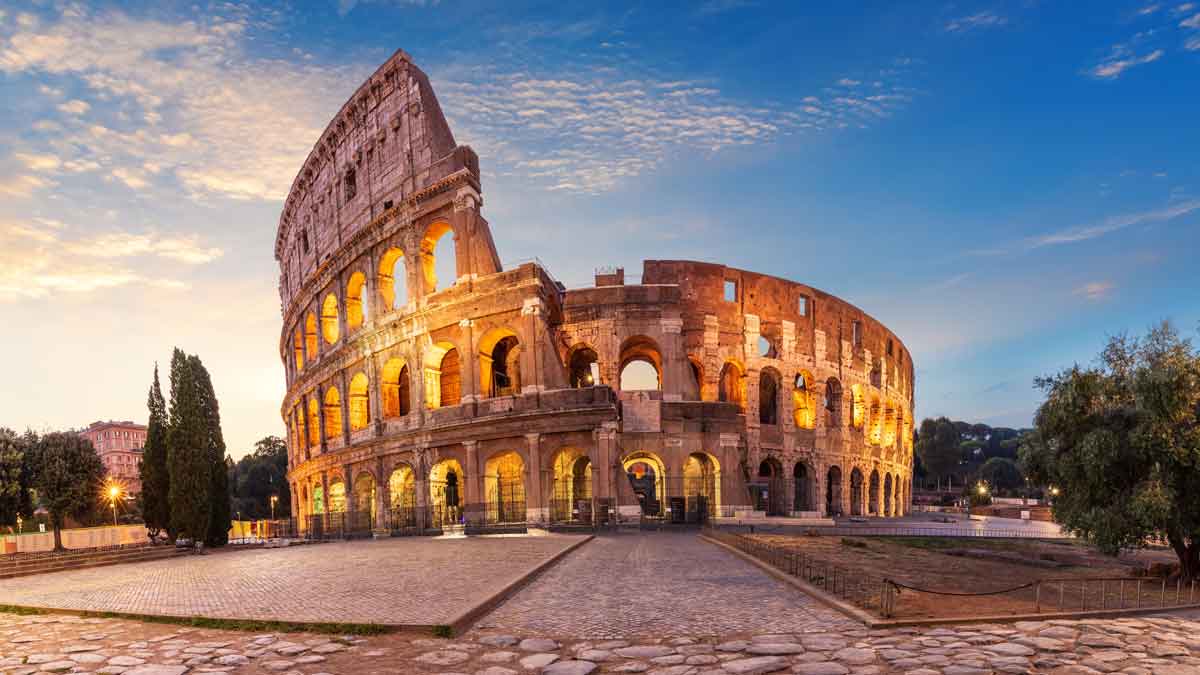
The Colosseum is an iconic Roman building Image: Getty
Best museums and galleries in Rome
Rome is often called an open-air museum, but the city also boasts some of the finest indoor collections in the world. From ancient treasures to Renaissance masterpieces, Rome's museums are destinations in themselves. Many museums are closed on Mondays (or Sundays in the Vatican), so plan accordingly.
Capitoline Museums (Musei Capitolini)
Head to the Michaelangelo-designed Piazza del Campidoglio to find the famous Capitoline Museums: the world's first public museums. One side is the Palazzo dei Conservatori and on the other the Palazzo Nuovo, which make up the Musei Capitolini.
Inside, the statues, paintings and artefacts are closely related to the city of Rome. Here is where you'll find the bronze Capitoline Wolf (who suckled Romulus and Remus, founders of Rome); the original statue of Emperor Marcus Aurelius (a copy stands in the piazza outside); Bernini's Head of Medua; paintings by masters like Titian and Caravaggio; and many other treasures.
There's a secret, lesser-known part of the Capitoline Museums stored at Centrale Montemartini on Via Ostiense. Here, marble statues are placed between old power station machinery: a unique blend of classical and modern.
Galleria Borghese
Set in the beautiful public Villa Borghese gardens, this gallery is a must for art lovers. It has one of the largest collections in the world, featuring masterpieces by the likes of Bernini, Caravaggio, Raphael and da Vinci. Visitor numbers are limited to timed entries, so booking in advance is essential.
There are several other museums and landmarks within the Villa Borghese gardens. Try to visit:
- Villa Giulia - once a 16th-century papal summer residence, it now houses the Museo Nazionale Etrusco full of Etruscan (pre-Roman) treasures.
- Villa Medici - this 16th-century mansion was built by the archduke of Tuscany, and now hosts an artists' residence, arts centre and cultural heritage centre.
- Bioparco di Roma - Rome's zoo that's over 100 years old and now aims to conserve endangered species.
- Galleria Nazionale d'Arte Moderna e Contemporanea - a splendid 19th-century to modern art collection, with artworks by greats like van Gogh, Klimt, Pollock, Warhol and more.
- Tempio di Esculapio - an 18th-century temple dedicated to Asclepius (God of Medicine) in the gardens' lake.
National Roman Museum (Museo Nazionale Romano)
Spread across four main locations, the Museo Nazionale Romano showcases Rome's ancient heritage. At Palazzo Massimo alle Terme, you'll discover four floors stocked with ancient artefacts from the second to fifth century AD: sculptures, coins, art and mosaics.
Move on to the Baths of Diocletian to find more bronze and marble statues, plus part of the largest Ancient Roman thermal baths. At the Palazzo Altemps close to the famous Piazza Navona, there's a museum full of ancient sculptures belonging to noble Roman families. This museum also contains an interesting Egyptian collection. Finish at Crypta Balbi, a museum that hosts finds from the Balbus Theatre archaeological site, plus an exhibition on Rome as it was between the fifth century and early Middle Ages.
Castel Sant'Angelo
The Castle of the Holy Angel (Castel Sant'Angelo) was originally built as a second-century mausoleum under Emperor Hadrian. The site is named after a vision by Pope Gregory I in 590: Archangel Michael sheathing his sword atop the mausoleum, signalling the end of a plague. A bronze statue of Michael stands in the same place today.
Now owned by the Italian Army, Castel Sant'Angelo displays medieval weapons, tombs, an old prison, Renaissance paintings and objects, and the apartments intended for popes to retreat to in case of an attack on the Vatican.
Castel Sant'Angelo was also the Illuminati's hideout in the popular film Angels and Demons, adapted from Dan Brown's novel.
Palazzo Colonna
Palazzo Colonna (near Piazza Venezia) is a hidden gem in Rome: one of the Eternal City's oldest and largest private palaces and galleries, only open on Saturday mornings. The Colonna family still lives in this palace, eight centuries after it was built in the 14th century.
Colonna's Baroque interior was designed by master architects Bernini, Fontana, Johan Paul Schor and Antonio del Grande. Enter to see the family's impressive art collection, with frescoes, sculptures, precious furniture and artworks by prominent 15th and 16th-century artists like Pinturicchio, Tintoretto, Cosmè Tura, Carracci, Guido Reni, Salvator Rosa, Bronzino, Guercino and Vanvitelli.
Galleria Nazionale d'Arte Antica (Palazzo Barberini)
Palazzo Barberini is conveniently located near Piazza Barberini. This 17th-century palace houses the Galleria Nazionale d'Arte Antica: the National Gallery of Ancient Art. Maffeo Barberini, who later became Pope Urban VIII, founded this palace. Keep an eye out for bees painted on ceilings and statues: this is the crest of the Barberinis.
In Palazzo Barberini, you'll have access to incredible artworks by Rafael, Filippo Lippi, Caravaggio, Tintoretto, El Greco and Bronzini - plus wonderful ceiling paintings, like in the Pietro da Cortona great hall. Your ticket also grants you access to Palazzo Corsini on Via della Lungara: another art collection, preserved in its 18th-century majesty.
Galleria Dori Pamphilj
This gallery in the Palazzo Doria Pampilj, a 16th-century palace belonging to the Doria family, hasn't yet been discovered by mass tourism. The palace is full of paintings by Titian, Raphael, Caravaggio, Correggio, Vélazquez and more.
The normal ticket grants you access to beautiful spaces like the throne room and ballroom. There are so many paintings that they're hung from the very top to bottom of walls. You can add on a ticket to Princess Doria's private apartments if you like.
MAXXI (National Museum of 21st-Century Arts)
A striking contemporary space designed by architect Zaha Hadid, MAXXI is dedicated to modern art and architecture. It offers a refreshing contrast to Rome's ancient and Renaissance landmarks.
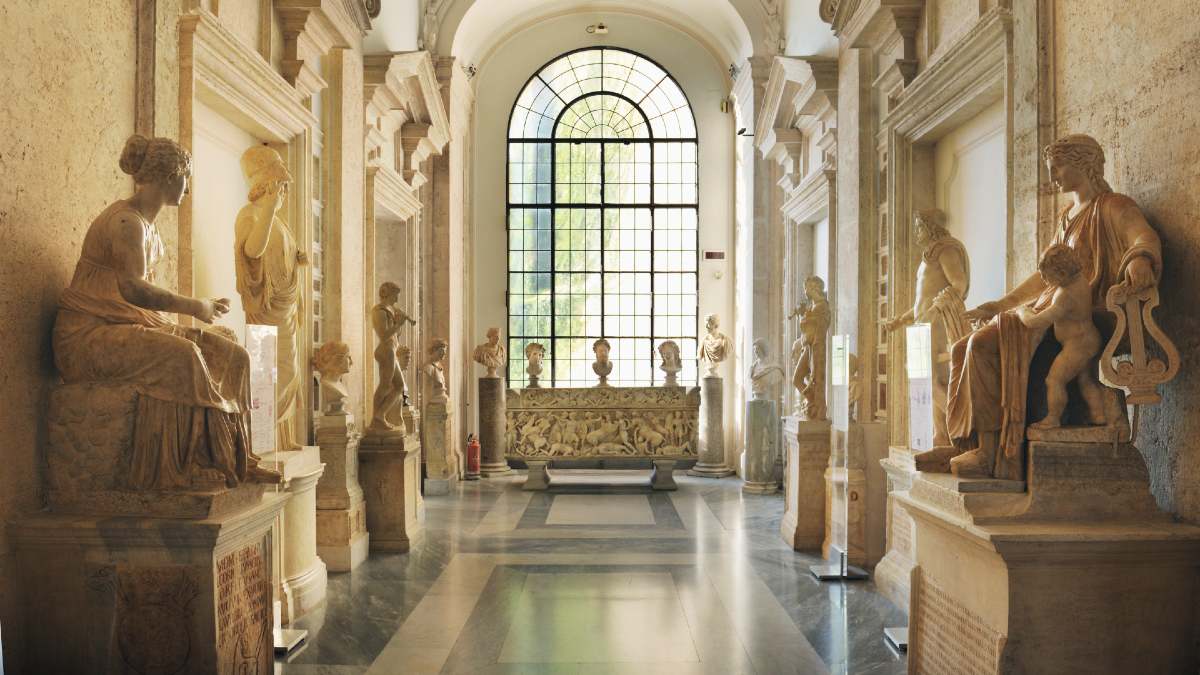
The Capitoline Museums are considered the world's oldest. Image: Getty
Renaissance & modern history locations in Rome
Rome's more recent history is also etched into its streets and squares.
Trevi Fountain (La Fontana di Trevi)
The gorgeous Trevi Fountain is Rome's most famous fountain - possibly even the world's most famous fountain, especially for fans of Fellini's 1960 film La Dolce Vita. Located in Piazza di Trevi, this 30m tall Baroque fountain was built from 1732-62 by architect Nicola Salvi and named for the three roads (tre vie) that once came together at the fountain.
At Trevi Fountain, look for Neptune (god of the sea) on his seashell chariot, pulled by two winged horses and tritons (young sea gods). One horse is calm, the other raging - like the changing moods of the sea. In two niches next to Neptune, there are statues made by Filippo della Valle representing abundance (left) and health (right).
Try your luck by throwing a coin into Trevi Fountain, making sure to close your eyes and throw the coin over your left shoulder with your right hand. Legend says those who throw one coin will return to Rome one day. For two coins, you will find your love in Rome; for three coins, you will get married (or divorced, if you prefer). Rome donates about most of the thrown coins to a charity.
Piazza Venezia
Visiting Piazza Venezia is a must in Rome. There are many beautiful and famous sights here, like the giant white marble monument Altara della Patria (Altar of the Fatherland) that commemorates Italy's 1861 unification. It was built between 1895-1911 by Giuseppe Sacconi on top of Palatine Hill, and features many symbolic additions.
In front is a bronze statue of Italy's first king, Vittori Emanuele II, on horseback. Its sculptor Enrica Chiaradia worked on it for almost 20 years! On top of the building are two statues of Victoria, goddess of victory. On the left, a statue of Unity by Carlo Fontano; on the right, one of Freedom by Paolo Bartolini. Several reliefs depict important Italian cities. There is also a statue of the goddess Roma, under which the Tomb of the Unknown Soldier is guarded by an eternal flame and two soldiers. Much like Australia's Tomb of the Unknown Soldier in Canberra, this tomb also honours all unidentifiable soldiers who perished in wars, particularly World War I.
Spanish Steps (Scalinata della Trinità dei Monti)
The Spanish Steps lead from Piazza di Spagna to the French monastery church Trinita dei Monti. Built in beautiful Rococo style between 1723 and 1726, the Spanish Steps have three terraces to reference the Holy Trinity. Pause near the Egyptian obelisk for a stunning view - though be aware that this is a popular spot with lots of crowds. Nearby, visit Via Condotti for luxury shopping.
Campo de’ Fiori
Campo de' Fiori means Field of Flowers, referencing its origin as a flower-filled meadow in the Middle Ages. It's the only square in the centre of Rome without a church. Instead, it hosts a market Monday to Saturday full of fresh flowers, fruits, vegetables and herbs. At night, it transforms into a social hub with surrounding terraces and bars coming alive.
But Campo de' Fiori wasn't always so lovely: it used to be a site for executions. Look for the statue of Giordano Bruno, a philosopher burned alive in 1600 for heresy and now considered a martyr for freedom of thought. His statue boldly faces the Vatican.
EUR District
Head to Piazza Guglielmo Marco to see EUR, a modernist district commissioned by Mussolini for the 1942 World Fair, which never took place due to the outbreak of World War II. It was intended as a symbol of the new imperial Rome. Today it is home to striking futuristic architecture, including the Palace of Roman Civilisation (Palazzo della Civiltà Italiana), nicknamed the Square Colosseum by locals.
Tick off seeing the Palace of the Civilisation of Labour (Palazzo della Civiltà del Lavoro), the Congress Palace (Palazzo dei Congressi) and the Rome Convention Centre (La Nuvola) too. There are also five interesting museums in the district: the Luigi Pigorini National Museum of Prehistory and Ethnography, the National Museum of Folk Art and Traditions, the Museum of Eastern Art, the National Museum of the Middle Ages, and the African Museum.
Jewish Ghetto of Rome
Pope Paul IV founded the Jewish Ghetto of Rome, located on Lungotevere de' Cenci, in 1555. Roman Jews (who had lived as a community in Rome since before Christian times) were forced to live in the ghetto and be locked in at night. The Jews were forced to pay for the wall themselves and lived in inhumane conditions. They had to endure various humiliations and restrictions: they weren't considered citizens, weren't allowed to own any property, and had to attend Catholic sermons on the Jewish sabbath.
The ghetto was finally demolished in 1870 when Rome was won by the Kingdom of Italy, deposing the Papal States. The Jews were granted citizenship and allowed to leave the ghetto. Its walls were torn down in 1888, and in 1904 the Great Synagogue of Rome opened as a grand place of worship for Orthodox Judaism. Today you can also visit the enlightening Jewish Museum of Rome (Museo Ebraico di Roma) inside.
Look down when walking these narrow streets: many cobblestones have brass plaques (Memorie d'inciampo) naming the people who were taken from their homes on 16 October 1943 by occupying Nazis and deported to death camps. Only 16 people of 1,259 returned.
Piazza Navona
Piazza Navona is one of Rome's most famous and beautiful squares, and a favourite destination for tourists. It was originally built in 86 CE under Emperor Domitian as an athletics stadium (Circus Agonalis) for 20,000 spectators. In the 17th century, the long stadium was transformed into a city square with beautiful Renaissance buildings. Nowadays, it's a vibrant space filled with cafés, portrait artists and street performers. In December, Piazza Navona turns into a large Christmas market.
Look out for La Fontana dei Quattro Fiumi (The Fountain of Four Rivers) by Bernini, with its four statues representing the rivers Donau, Ganges, Nile and Rio de la Plata. Its giant obelisk originally comes from Circus Maximus on the Via Appia.
Visit the Palazzo Braschi on Piazza Navona, a palace that's now home to the Museo di Roma, where you can explore the history of Rome through art. You can also go underground to the excavations of the original Stadio di Domiziano (Stadium of Domitian) on a short tour.
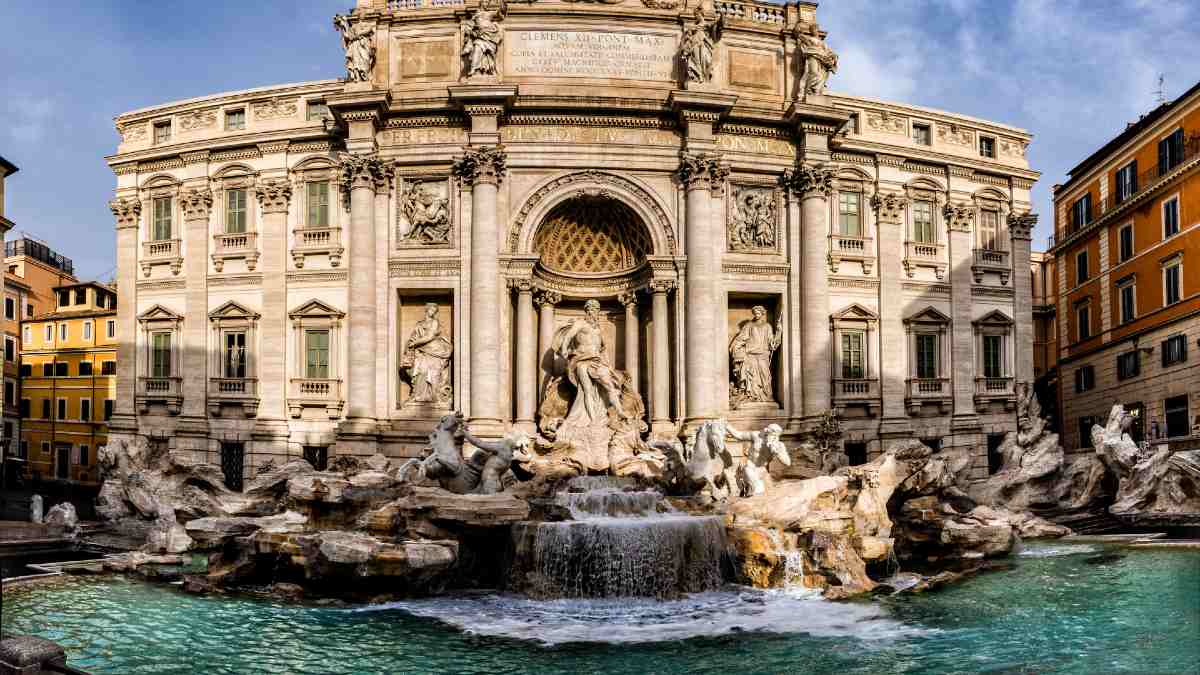
Rome's Trevi Fountain is arguably the world's most famous fountain. Image: Getty
Visiting Vatican City
No guide to Rome is complete without Vatican City, the world's smallest independent state and the beating heart of Catholic Church. Officially placed under the sovereignty of the Holy See in 1929 by the Lateran Treaty, Vatican City boasts its own security service: the famous Swiss Guard.
St. Peter's Basilica (Basilica di San Pietro)
One of the largest churches in the world, St Peter's Basilica is a Renaissance masterpiece. Considered the holiest church of Vatican City, the basilica was built between 1506-1626 on the site of an old church dating from the time of Emperor Constantine the Great (324).
Bramante, Raphael, Antonio del Sangallo, Michelangelo, Carlo Maderno and Bernini all worked on this gorgeous church. Highlights include La Pieta, a 1499 artwork by Michelangelo that is the only work he signed; the gigantic bronze baldachin by Bernini from 1633 over where Peter the Apostle is believed to be buried; and the bronze statue of Peter whose foot has worn away from pilgrims kissing it.
You can choose to climb the basilica's dome for views of Rome and Vatican City, or delve underground to visit the Vatican Grottoes: crypts of popes, monarchs and possibly Saint Peter.
Sistine Chapel & Vatican Museums (Capella Sistina & I Musei Vaticani)
A vast collection of art, artefacts and religious objects, the Vatican Museums span over 26 museums housed in Apostolic palaces. Don't miss La Galleria della Carte Geografiche: a 16th-century gallery of enormous topographical maps.
The Sistine Chapel is the crown jewel of the Vatican Museums, featuring Michelangelo's legendary ceiling frescoes and The Last Judgment painting behind the altar. The side walls are lined with paintings by Ghirlandaio, Botticelli, Perugino, Pinturicchio and more. This is also where cardinals meet for conclave to elect a new pope.
Make sure to visit the Vatican Gardens (Giardini Vaticani) too. These 23-hectare gardens are located behind the Vatican Museums and can only be visited on an official tour. Designed in a mix of Italian and French styles with Renaissance and Baroque influences, the Vatican Gardens are a peaceful oasis in the heart of the city.
St. Peter's Square
Designed by Bernini in the 17th century, St. Peter's Square is an iconic gathering place where thousands attend papal audiences, like the Urbi et Orbi speeches given by the Pope at Easter and Christmas. The colonnades and obelisk make St Peter's Square one of the most recognisable in the world.
Keen to see the Pope? He holds a service every Wednesday in St Peter's Square (weather permitting, and if he is in Rome). Or visit at noon on Sunday, when the Pope gives a blessing from the window of his study.
Passetto di Borgo
The Passetto di Borgo is the Pope's secret escape route: a passageway from the Apostolic Palace of the Vatican to Castel Sant'Angelo in Rome in case of attacks on his person. In place since 1277, the passage has most notably been used twice. In 1494, Pope Alexander VI Borgia fled through the tunnel during the invasion of Rome from Charles VIII of France's militias.
In 1527, Pope Clement VII Medici also fled here during the sack of Rome by a rogue army. Many Swiss Guards were killed in the attack: they initiate new recruits on the same day as the invasion (6 May) to commemorate the fallen.
The Swiss Guards still keep a key ready for the Pope in case of emergency. But you can also tour the Passetto di Borgo since it was opened to the public in 2000.
Aventine Keyhole
Venture to Piazza dei Cavalieri di Malta 3 on Rome's Aventine Hill and find the green door of the Priory of the Knights of Malta. Peep through the keyhole to see a perfectly framed view of St Peter's Basilica. It's free to visit, open 24 hours and makes for an amazing photo.
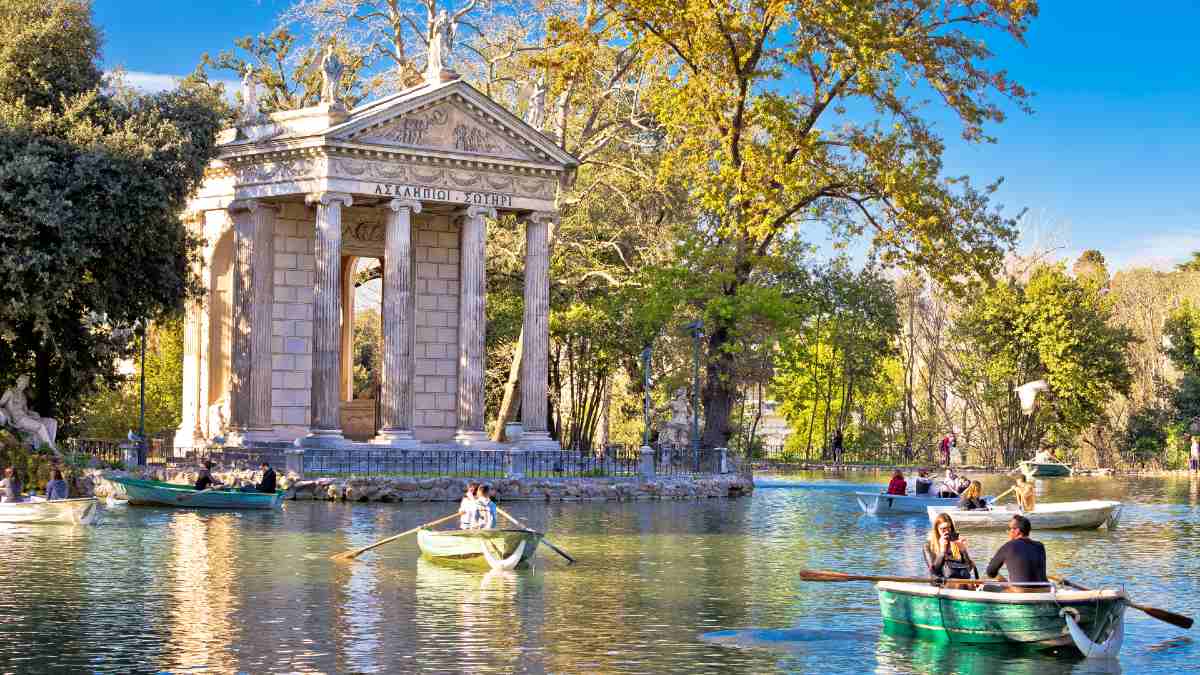
Visit Galleria Borghese for a lovely day out with lots to see and do. Image: Getty
What to eat in Rome
Roman cuisine is rustic, simple and full of flavour.
Start the day with a famous espresso o cornetto: a coffee and croissant. Pick a café with outdoor seating to people-watch as the caffeine energises you for all the walking you'll be doing each day.
For a quintessentially Rome lunch break, head to Campo de' Fiori and Testaccio Market and taste the local produce. Try street food staples like supplì (fried rice balls), pizza al taglio (pizza by the slice) and porchetta (roast pork sandwiches). Fornaio (bakeries) and botteghe (delis) also provide simple, tasty feasts on the go.
At dinner, sample one of Rome's pasta specialties: carbonara, cacio e pepe, amatriciana or gricia. Other staple Roman meals include coda alla vaccinara (ox-tail stew) and trippa alla Romana (Roman tripe). Lazio region wines such as Frascati pair perfectly with dishes.
Don't forget dessert! Authentic gelato shops can be found throughout the city. When selecting a quality gelato store, look for natural gelato colours and stainless steel tubs. Opened in 1880, Fassi Gelateria is Rome (and possibly even Italy's) oldest known gelato store.
Dining etiquette in Rome
Italians typically eat lunch between 12:30-2:30pm, and dinner from 7:30-10:00pm. Many restaurants close between lunch and dinner, so try to eat when the Romans do! Take your time with each meal, which is meant to be savoured and not rushed.
Don't be alarmed when your restaurant bill includes a coperto (cover charge). This is normal and covers the table service and bread.
Drinking water in Rome
The summer heat can be intense in Rome, so stay hydrated - especially when exploring outdoor sites like the Colosseum or Forum.
Luckily, Rome's nasoni (drinking fountains) provide clean, safe drinking water throughout the city. Bring a reusable bottle and refill as you go.
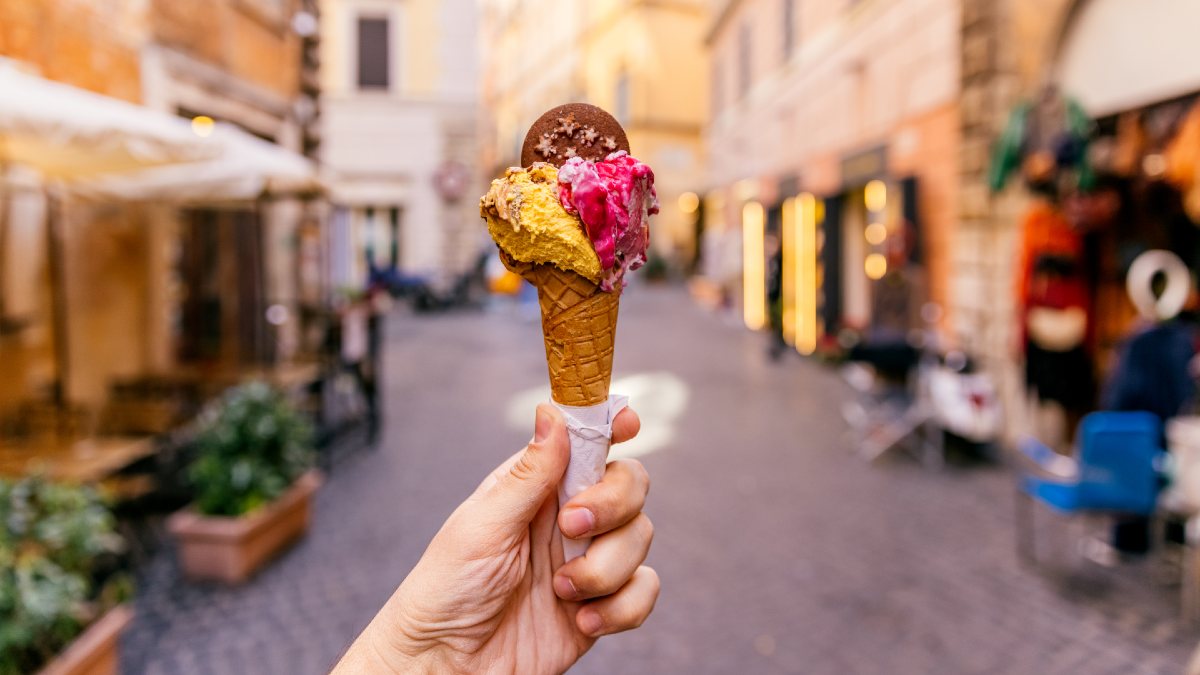
Gelato is the perfect sweet treat during the hot summers in Rome. Image: Getty
Where to stay in Rome
Rome offers a wide range of accommodation options:
- Luxury - elegant hotels near Piazza di Spagna or Via Veneto, like Residenza Napoleone, St Regis or Hotel Splendide Royal.
- Mid-range - boutique hotels in Monti, Trastevere or Prati, like Condominio Monti or The Boutique Hotel.
- Budget - hostels and guesthouses near Termini Station, like Hotel Paolo II or Eccelso Hotel.
- Apartments - ideal for families or longer stays, offering a more local experience.
RACV Members can access exclusive discounts and inclusions when booking hotels worldwide.
How to get around Rome
Rome's compact centre makes walking the best way to experience the city. Bring comfortable shoes: Rome's cobblestone streets are charming, but tough on the feet!
Public transport can be useful when covering longer distances:
- Metro - three main lines connect many popular tourist areas
- Buses and trams - sometimes crowded, but good for reaching fewer central neighbourhoods
- Taxis and ride-hailing apps - convenient but can be costly; always use official, licensed taxis with a metre.
Public transport tickets must be validated before use. Machines are located at metro entrances and on buses or trams. Failure to validate can result in fines.
Traffic can be heavy, so allow extra time if you need to catch a train or flight. RACV Members can save on transport and travel services in Italy.
If you plan to drive in Italy, you'll need an International Driving Permit.
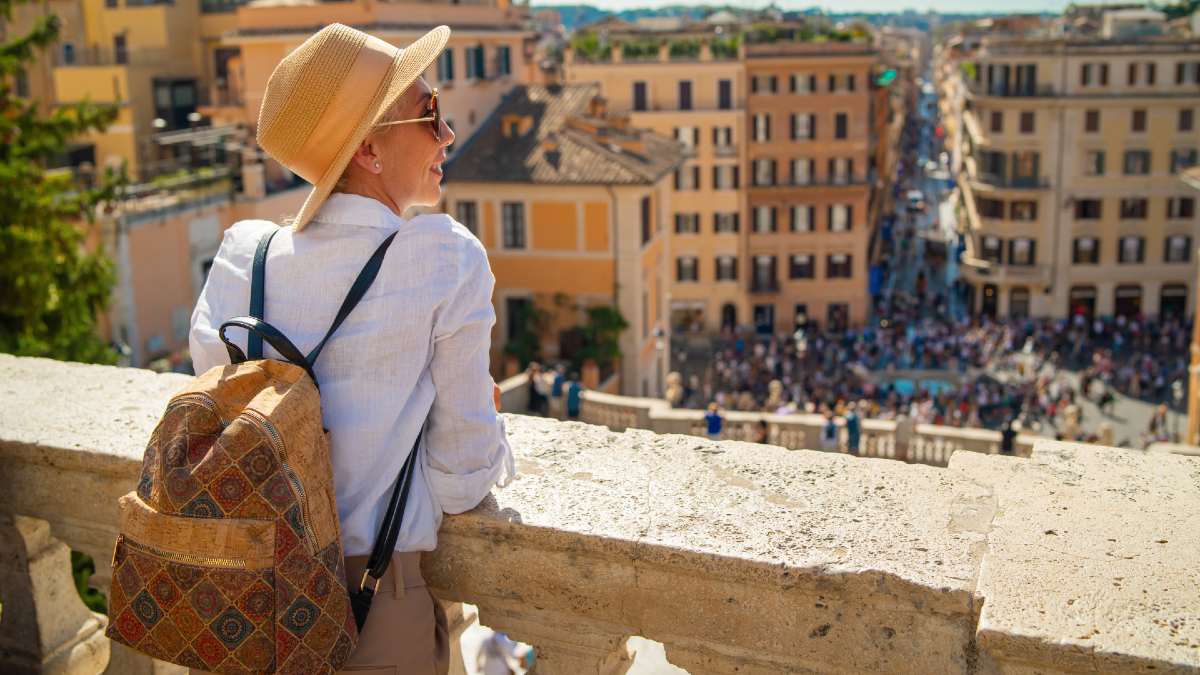
Rome is wonderful to visit any time of the year, but it gets busy in summer. Image: Getty
Practical tips for visiting Rome
Big and busy Rome can feel overwhelming for first-time visitors. Here are some travel tips to make the most of exploring Rome.
More: How travel insurance protects you in medical emergencies and natural disasters while overseas
Seasons in Rome
The Eternal City is a year-round destination, but some seasons are more comfortable for travellers.
- Spring (April–June) - warm weather, blooming gardens and lively piazzas make spring one of the best times to visit Rome.
- Autumn (September–October) - mild weather and fewer crowds: ideal sightseeing conditions.
- Summer (July–August) - hot and crowded, though full of outdoor events. Some shops and restaurants close in mid-August for Ferragosto holidays.
- Winter (November–February) - cooler and quieter: perfect for visiting museums and enjoying Christmas markets.
Language in Rome
Italian is the official language, but English is widely spoken in tourist areas, hotels and restaurants. Learn the basics, like buongiorno (good morning), buonasera (good evening), per favore (please) and grazie (thank you).
Currency in Rome
Rome uses the euro (€). ATMs are widely available but use the ones inside banks to avoid high fees. Credit and debit cards are accepted in most places, but cash is useful for market stalls and smaller purchases.
Tipping isn't obligatory in Rome, since a service charge is usually included in restaurant bills. Rounding up or leaving small change as a tip is appreciated but not required.
Remember to always carry a few coins for using public toilets in Rome.
Safety in Rome
While Rome is generally safe, there are a few security tips to keep in mind. 112 is Italy's emergency number for emergency services: well worth memorising.
Pickpocketing is quite common around crowded attractions like the Colosseum, Trevi Fountain or Termini Station. Wear an anti-theft bag to help deter opportunistic thieves.
Also stay away from people offering unsolicited tours or friendship bracelets: these are usually tourist scams.
Dress codes in Rome
Italians tend to dress smartly. While casual clothes are fine for sightseeing, avoid overly revealing outfits in formal spaces.
When visiting churches like St Peter's Basilica, dress modestly with your shoulders and knees covered. Carry a light scarf or shawl to cover up if needed.
Technology and connectivity in Rome
Italy uses Type F and L plugs with a 230V supply. Bring a universal adapter to easily charge your devices.
Free Wi-Fi is available in many hotels and cafés, but it may not be reliable everywhere. Consider a local SIM card or eSIM for roaming data.
Google Maps is useful for navigating, but download offline maps the night ahead, since mobile coverage can be patchy in some areas.
The information provided is general advice only. Before making any decisions please consider your own circumstances and the Product Disclosure Statement and Target Market Determinations. For copies, visit racv.com.au. Royal Automobile Club of Victoria (RACV) Ltd AR 001243563 is an authorised representative of the issuer and receives commission for each policy sold or renewed. RACV Travel Insuranceissued by Tokio Marine & Nichido Fire Insurance Co., Ltd ABN 80 000 438 291 AFSL 246 548. Terms & conditions apply, refer to the PDS.


